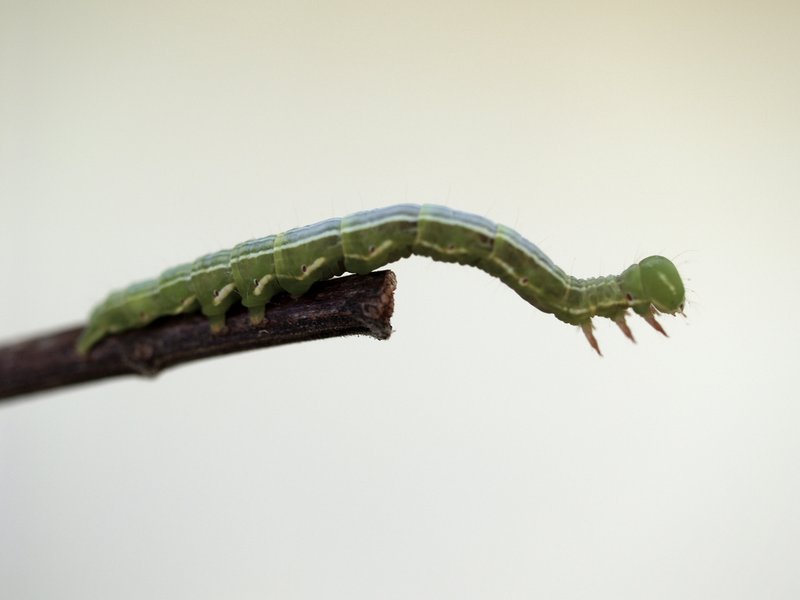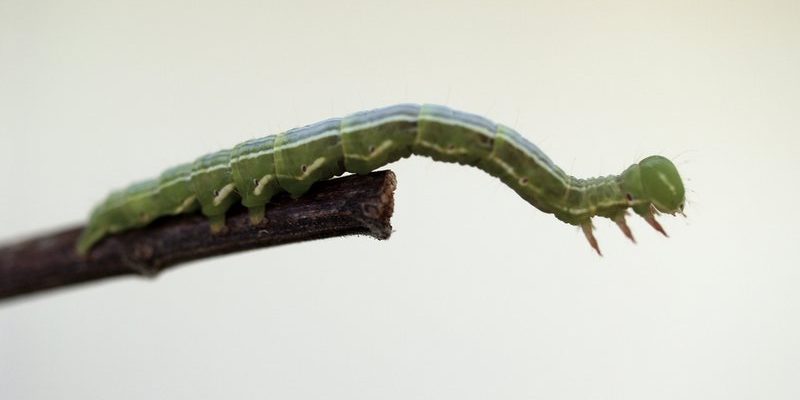
Inchworms are a common sight in many gardens and forests, but their presence isn’t uniform across the globe. While they thrive in various environments, whether you live in a bustling city or deep in the woods, their habitat can vary dramatically depending on numerous factors. Let’s dive into the world of inchworms and explore their habitats, distribution, and some fascinating facts about these curious little critters!
What Exactly Are Inchworms?
Inchworms aren’t actually a single species; they belong to the larvae stage of various species of moths, especially from the family Geometridae. The name “inchworm” comes from their unique method of locomotion. They move by contracting and stretching their bodies, creating a distinctive “inching” motion that certainly earns them their name.
These larvae often have a camouflage design that helps them blend in with their surroundings, making them less visible to predators. In many cases, they can be green, brown, or even gray, mimicking the leaves or branches they live on.
Inchworms can be found in a variety of environments, including forests, fields, and gardens. Their diet mainly consists of leaves, which they munch on as they grow. You might even find them snacking on your favorite plants if you’re not careful!
Distribution of Inchworms Across Continents
Now, here’s where it gets interesting. Inchworms are primarily found in temperate regions, which means they thrive in areas with distinct seasonal changes. They are common in North America, Europe, and parts of Asia. However, when it comes to continents like Antarctica and certain parts of Australia, the story changes.
In Antarctica, the extreme cold and lack of vegetation make it an inhospitable place for inchworms. Similarly, in the arid deserts of Australia, the environmental conditions simply don’t support their lifestyle. While there are many species of inchworms, most prefer habitats that offer plenty of leafy snacks and suitable temperatures.
So, although you’ll find inchworms in many parts of the world, you won’t find them everywhere. It’s like hosting a party; you can invite lots of friends, but some just can’t make it due to distance or weather, right?
Inchworm Habitats and Environmental Preferences
Inchworms love environments that provide ample food and shelter. You might find them in wooded areas, gardens, and even parks. They tend to favor places with a lot of trees, shrubs, and flowers, as these locations offer both the food they need and protection from predators.
Humidity also plays a significant role in their habitat. Inchworms thrive in areas with moderate humidity levels. Too dry, and they may struggle to survive. Too wet, and the plants they feed on could be washed away or rot away. It’s all about balance!
You might be wondering how exactly inchworms know where to find their perfect homes. Well, they rely on a combination of environmental cues, such as temperature, moisture, and the availability of food sources. It’s kind of like they have a built-in GPS that guides them to the best spots for munching and growing.
The Lifecycle of Inchworms
Inchworms undergo a fascinating transformation during their lifecycle. Like many caterpillars, they begin as eggs laid on leaves. Once they hatch, they go through several stages, or instars, where they grow and molt before entering the pupal stage, ultimately becoming a moth.
Each stage of their lifecycle plays a vital role in their survival. For instance, during the larval stage, inchworms must eat as much as possible to grow and store energy for their transformation into adulthood. It’s like preparing for a big exam; they need to study hard (or eat hard) to pass into the next phase of life!
When they finally become moths, they emerge from their cocoons, ready to start the cycle all over again by laying their eggs. This cycle ensures that inchworms continue to thrive in various environments, even if they don’t make it to every continent.
Factors Affecting Inchworm Populations
You might be curious about what affects inchworm populations. Several factors can impact their numbers and distribution. For example:
- Climate Change: Changes in temperature and weather patterns can alter their habitats, pushing them to adapt or move to new areas.
- Pesticides: The use of pesticides in agriculture can harm inchworms, especially if they’re exposed directly to chemicals.
- Natural Predators: Birds, spiders, and other predators can heavily impact inchworm populations, keeping them in check.
Every little change in their environment can ripple through their population. It’s a reminder that everything in nature is connected, and even small creatures like inchworms play a role in the ecosystem.
How to Support Inchworms in Your Garden
If you’re a garden enthusiast, you might want to support inchworms in your yard. Here are a few tips:
- Plant Native Species: Native plants provide food and shelter for inchworms and other local wildlife.
- Avoid Pesticides: Using fewer chemicals helps protect inchworms and creates a healthier ecosystem.
- Provide Shelter: Leave some leaves and branches in your garden for inchworms and other beneficial critters.
By taking these steps, you can create a welcoming environment for inchworms and contribute to biodiversity in your area.
Concluding Thoughts on Inchworms
So, are inchworms found on every continent? The short answer is no. While they thrive in many regions, they can’t be found everywhere due to environmental challenges. Each continent has unique conditions that either support or hinder their existence.
To wrap it up, inchworms are fascinating little creatures that play an essential role in our ecosystems. By understanding their lifecycle, habitats, and the factors that affect them, we can appreciate these tiny wonders a little more. And who knows? Maybe the next time you see one inching its way across your garden, you’ll feel a bit of connection to the larger world of nature around you.

